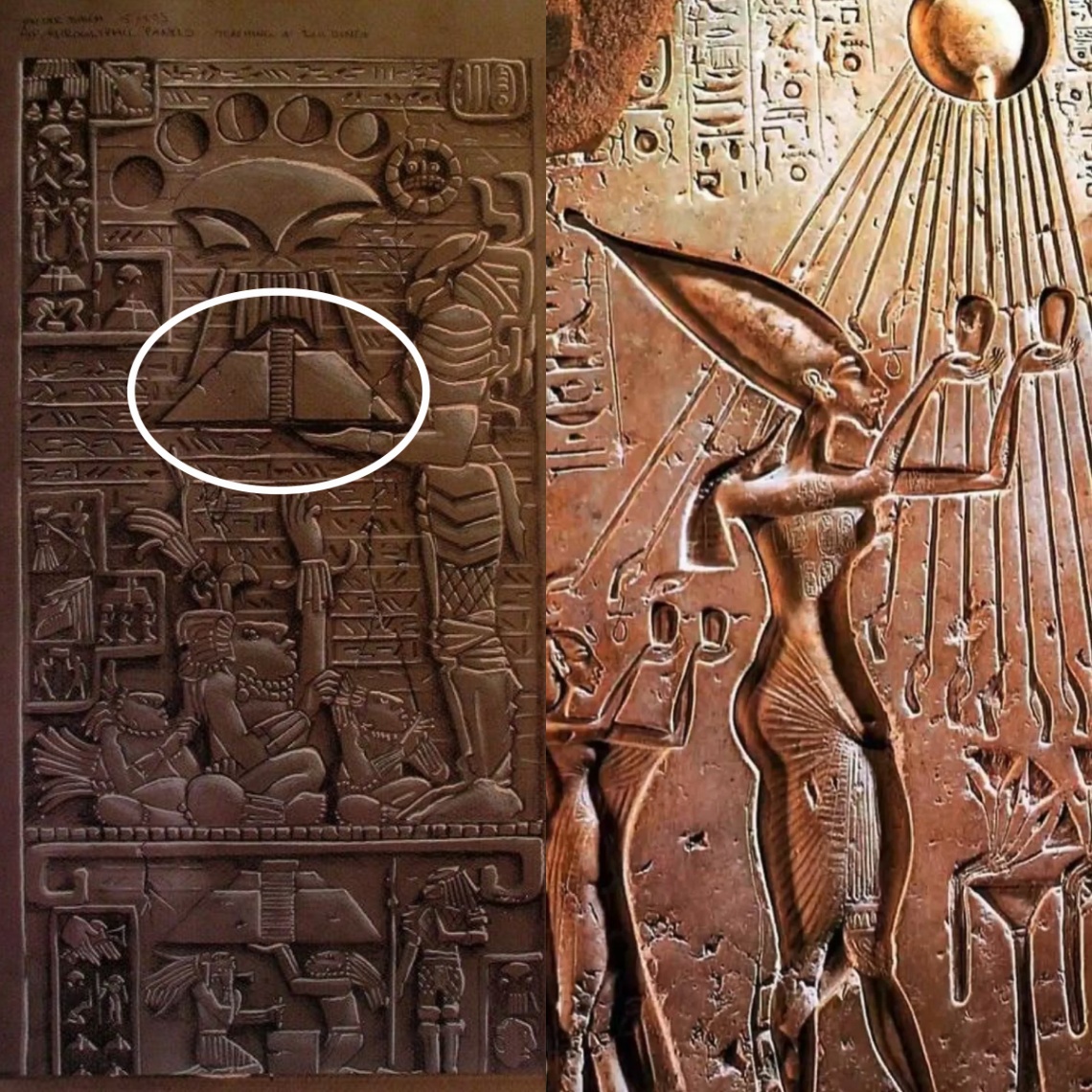The pyramids of ancient Egypt have long fascinated scholars, archaeologists, and history enthusiasts alike. These monumental structures, towering above the desert sands, are testaments to the architectural prowess and cultural richness of an ancient civilization. Yet, beyond their physical grandeur, there lies a deeper mystery: the enigmatic figures often depicted in the ancient reliefs found within and around these pyramids. These figures, shrouded in mystery, offer a tantalizing glimpse into the minds and beliefs of the ancient Egyptians.

### Discovering the Enigmatic Figures
Ancient reliefs, intricate carvings found on the walls of pyramids and temples, are a key source of information about the people who built these wonders. These reliefs often depict gods, pharaohs, and daily life in ancient Egypt. However, some figures stand out due to their unique features and symbolic significance. These enigmatic figures are believed to hold the secrets to understanding the deeper meanings behind the construction of the pyramids and the spiritual life of ancient Egyptians.
### Symbolism and Significance
The enigmatic figures in ancient reliefs often exhibit distinctive features that set them apart from more commonly depicted gods and humans. They may have exaggerated proportions, unusual headdresses, or otherworldly attributes. These characteristics suggest that they held a special place in the ancient Egyptian belief system.
#### The Divine Architects
One interpretation is that these figures represent divine architects or deities associated with creation and construction. In ancient Egyptian mythology, gods such as Thoth and Ptah were believed to have played pivotal roles in the creation of the world and the design of sacred structures. The presence of these figures in reliefs near the pyramids may symbolize the divine guidance and inspiration behind their construction.
#### Guardians of the Afterlife
Another theory posits that these enigmatic figures were seen as guardians of the afterlife. The pyramids themselves were designed as grand tombs for pharaohs, meant to secure their safe passage to the afterlife. The unique figures in the reliefs could represent protective deities or spirits tasked with safeguarding the soul of the deceased on its journey through the underworld.
### Decoding the Reliefs: Insights from Recent Discoveries
Advancements in technology and ongoing archaeological efforts have provided new insights into these ancient reliefs. High-resolution imaging, 3D scanning, and other techniques have allowed researchers to examine the carvings in greater detail, revealing previously unnoticed aspects of the enigmatic figures.
#### The Use of Color
Recent studies have shown that many reliefs were originally painted in vibrant colors, which have faded over millennia. Traces of pigment found on the figures indicate that color played a significant role in their depiction. The use of specific colors may have conveyed additional layers of meaning, such as the figure’s role or status within the pantheon of gods.
#### Hieroglyphic Context
The reliefs are often accompanied by hieroglyphic inscriptions, providing context and clues to their significance. By carefully translating and interpreting these texts, researchers have gained a better understanding of the figures’ identities and their roles within the ancient Egyptian cosmology. For instance, inscriptions might refer to the figure as a “protector of the pharaoh” or a “guide to the afterlife,” offering direct insight into their symbolic purpose.
### Theories and Interpretations: Bridging the Past and Present
The enigmatic figures in ancient reliefs continue to be the subject of various theories and interpretations. Scholars from different disciplines bring diverse perspectives to the table, enriching our understanding of these mysterious carvings.
#### Mythological Interpretation
From a mythological standpoint, the figures could represent lesser-known deities or mythological beings that played specific roles in ancient Egyptian religion. The detailed study of myths and religious texts helps identify parallels and connections, shedding light on the figures’ possible identities and functions.
#### Astronomical Connections
Some researchers suggest that the figures might be linked to astronomical phenomena or celestial bodies. The ancient Egyptians were keen astronomers, and their religious beliefs were deeply intertwined with the movements of the stars and planets. The unique features of the figures might symbolize constellations, star gods, or celestial events considered significant by the pyramid builders.
### Continuing the Quest: Future Research and Exploration
The study of enigmatic figures in ancient reliefs is an ongoing journey, with each discovery bringing us closer to understanding the rich tapestry of ancient Egyptian culture. Future research will likely focus on:
– **Advanced Imaging Techniques**: Utilizing cutting-edge technology to uncover hidden details and inscriptions.
– **Interdisciplinary Collaboration**: Bringing together experts in archaeology, Egyptology, anthropology, and other fields to build a comprehensive picture of the figures’ significance.
– **Comparative Studies**: Examining similar figures and motifs in other ancient cultures to identify potential influences and connections.
### Unveiling the Mysteries of Ancient Egypt
The enigmatic figures behind the pyramids, captured in ancient reliefs, offer a fascinating glimpse into the spiritual and cultural life of ancient Egypt. As we continue to decode these intricate carvings, we unravel the mysteries of a civilization that has captivated human imagination for millennia. Through careful study and innovative research, we can hope to uncover the secrets these figures hold, enriching our understanding of the ancient world and its enduring legacy.
Join the conversation and stay tuned for more revelations as we delve deeper into the enigmatic world of ancient Egyptian reliefs, shedding light on the timeless mysteries of the past.




